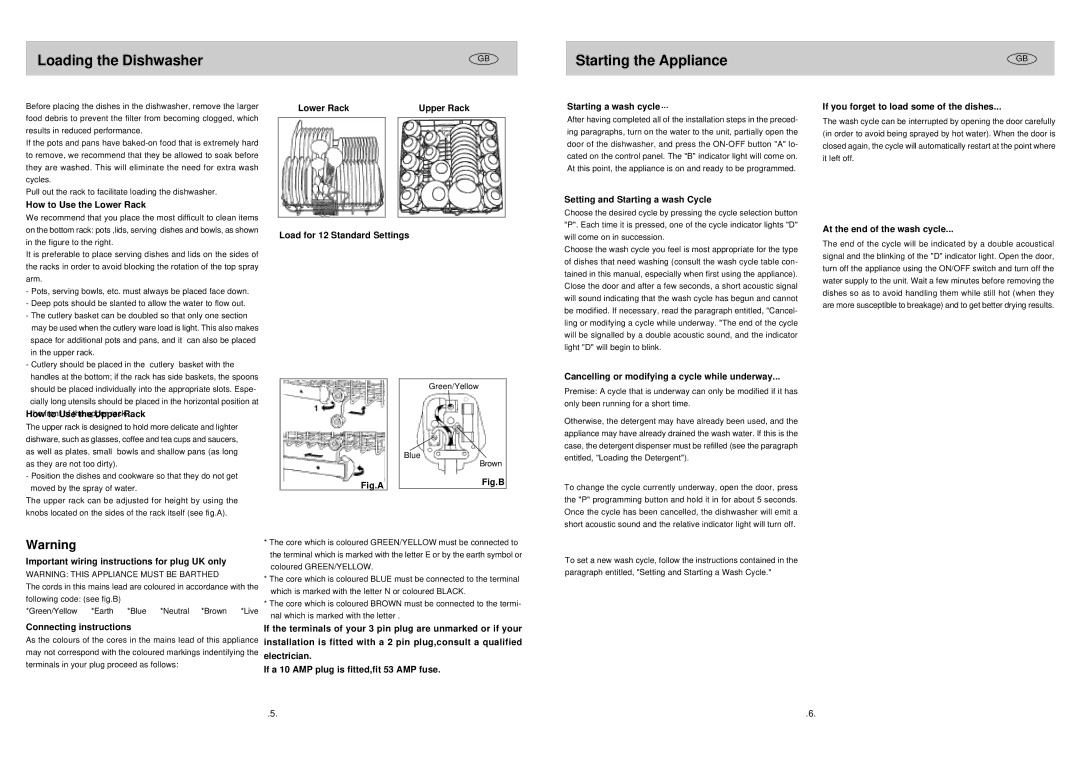WQP12-CBE3 specifications
The Haier WQP12-CBE3 is an innovative compact dishwasher designed for modern households where space efficiency and functionality are paramount. This model stands out due to its sleek design and powerful performance, making it a favorite among users looking for reliability in a smaller appliance.One of the main features of the Haier WQP12-CBE3 is its versatile washing capacity. The dishwasher can accommodate up to 12 place settings, allowing users to wash a substantial amount of dishes, glasses, and utensils in one cycle. This makes it ideal for families or individuals who frequently host gatherings. Additionally, its compact size means that it can fit comfortably in smaller kitchens or apartments without sacrificing cleaning efficiency.
The Haier WQP12-CBE3 is equipped with several advanced technologies that enhance its performance. One such technology is the efficient water usage system, which ensures that the dishwasher operates with minimal water waste while still delivering thorough cleaning results. This not only saves water but also reduces the overall energy consumption of the appliance, contributing to a more sustainable household.
Another notable characteristic of the Haier WQP12-CBE3 is its multiple wash programs. With various settings, users can select the appropriate cycle based on their specific needs, whether they are washing delicate glassware or heavily soiled pots and pans. The inclusion of an eco program further emphasizes the unit's energy efficiency, enabling users to conserve resources while maintaining effective cleaning performance.
The noise level of the Haier WQP12-CBE3 is also commendable, operating at a quiet decibel level that allows users to run it at any time without disrupting household activities. This is particularly beneficial for apartments or open-concept living spaces where noise can be a concern.
In terms of design, the Haier WQP12-CBE3 boasts a modern aesthetic with a stainless-steel finish that blends seamlessly into contemporary kitchen environments. The intuitive control panel with easy-to-read indicators adds to user convenience, making it accessible for individuals of all ages.
Overall, the Haier WQP12-CBE3 combines efficiency, practicality, and design into a compact package. Its main features and advanced technologies position it as a reliable choice for those seeking an effective, space-saving dishwasher that meets the demands of today's lifestyle.

